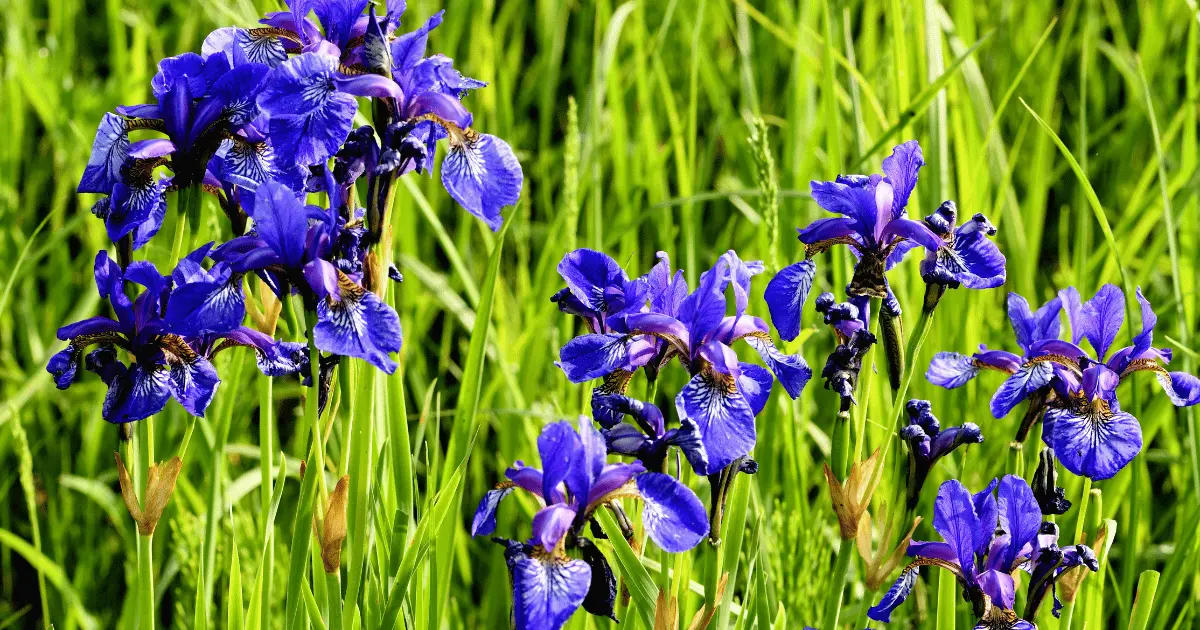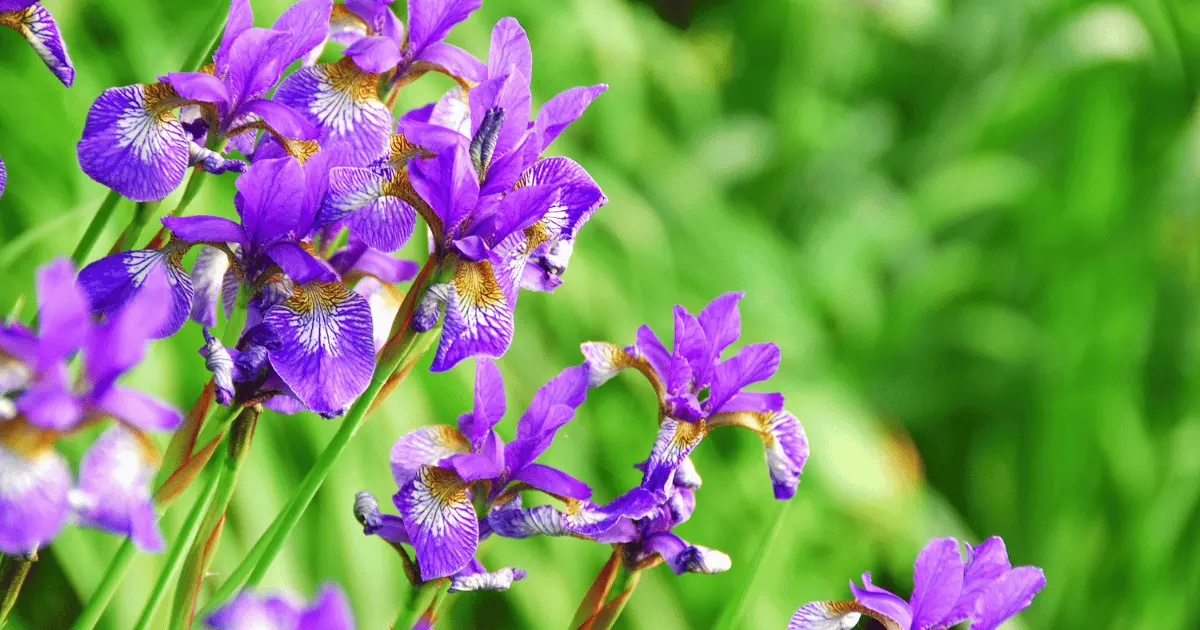The beautiful iris is named after the Greek goddess of rainbows, and rightly so. It comes in many magical colors.
Irises make a pleasant addition to your garden, and they grow seamlessly. They are reliable, easy to care for, and blossom for years.
Irises are easy perennial flowers to grow. They look stunning as cut flowers in a bouquet and are much appreciated by gardeners for the colors they bring to the garden.
They come in a variety, from bearded to crested, and their sword-shaped leaves are durable and will make your garden shine long after the blooms are gone.
The iris is a great plant for any gardener, and they have a special place in the heart of many Americans.
When do Irises Bloom?

Most irises bloom from late spring to summer. The blooming time of crested irises tends to follow that of the bearded types.
Many irises are all-season bloomers, while some bloom in different seasons. Some other types rebloom in late summer and fall.
The experience of having a garden full of iris blooms is euphoric. By growing different types of irises, you will enjoy these flowers all season long.
Do Irises Bloom in the First Year of Planting?
Only about 60-75% of irises bloom in the first year of planting. Some may need an extra year to establish themselves on the ground properly.
If your newly planted iris doesn’t bloom in the first year of planting, it is because it needs some time to grow sufficient roots to nourish a blooming plant.
Look at the size of the rhizome when you plant it. If it is small, it might be so young that it needs a year or two to be mature enough to flower.
How Long Do Irises Bloom For?
The blooming time for each iris variety is approximately two weeks. You can try some irises that bloom early in the season and some that bloom late so you can extend your blooming season by a couple of weeks.
How to Get Your Iris to Bloom Again
With reblooming iris varieties, gardeners can enjoy the second splash of color early to mid-fall. Here’s how to care for your plant for the best chance at a second bloom.
- The proper conditions must be met, with well-draining soil and full sun. Provide your plant with at least 6 hours of sun daily.
- Be sure to deadhead the faded flowers immediately after the plant is through with the first blooming so there will be enough time to form new flowers.
- Check for the depth of the rhizome. If it is too deep, the iris will suffer. Uproot the plant and replant it just beneath the soil if this happens.
- It would be best if you kept up with watering through the summer for irises that are rebloomers. Water every week until the plant reblooms.
- Check if the rhizome of the plant is overcrowded and separate it. After separation, replant them as soon as possible. You will see them bloom better after this split.
- Reblooming irises are heavy feeders, as they need a lot of energy and nutrients to produce flowers. You can give your plant a light top dressing of compost or apply fertilizer.
- Please get rid of unwanted weeds and other surrounding plants that might disturb your iris by competing for nutrients and water.
Care For a Blooming Iris

You need to give it favorable conditions to help your plant stay healthy and have longer-lasting blooms. Please keep it simple and give your iris the water, light, and nutrients needed to survive.
One of the best things you can do for your plant is to water it frequently. Do this in the morning, before the heat from the summer starts to get intense.
It is good practice to prune your iris, but don’t overdo it. Over-pruning can cause the plant to lose too much energy, making it focus on making leaves instead of flowers.
Another important tip is to mulch your plant. This will help keep the soil moist and cooler, keep it from getting too hard, and suppress weeds.
Finally, fertilize your iris regularly. The best time to do this is early morning or evening when the plant is not actively photosynthesizing.
Iris Care After Blooming
Caring for your iris when it is done with blooming will make it look better and keep it from wasting energy setting seed.
It is very easy and can be done in a few days or more if you have many as I do.
Please remove any remaining dried-up flower along with its whole stalk. Remove the leaves only when they are withered and dead.
Clean up any debris and dead leaves at the base of the iris plant. This will disallow any room for fungal infections and pests to breed.
Divide your iris rhizomes every three to five years. Entangled rhizomes will prevent the plant from blooming well.
Do this when the plant has finished blooming, and it is not too hot. Trim off any sections past their prime and no longer functional.
Plant the divided irises in full sun while ensuring they are not too deep. Water well and amend the soil with compost to improve drainage and provide nutrients.
Making an Iris Bloom
Irises can be brought back to bloom after an unsuccessful season. This can only happen if you’ve checked all the possible causes, not ruling anything out.
Iris not blooming can stem from weather, soil fertility, overcrowding, unhealthy rhizomes, pest or disease attack, planting depth, and site conditions.
Divide overcrowded irises and replant them, and while planting, place the rhizomes horizontally in a shallow hole.
You want the roots to go inside the ground but the rhizome protruding from the soil.
Keep your iris in the sun for six to eight hours to bloom. In climates with extreme heat, provide shade to prevent it from getting scorched.
Water twice a week if you’re not getting enough rainfall in the late winter and early spring.
Conduct a soil test to see if the soil has the right nutrients and is at the right pH for iris growth.
The ideal iris soil pH is 6.8, and it should have average nitrogen levels but a sufficient amount of phosphorus.
Pest and diseases are rarely a problem, but if the bulb gets affected, buds will not form.
